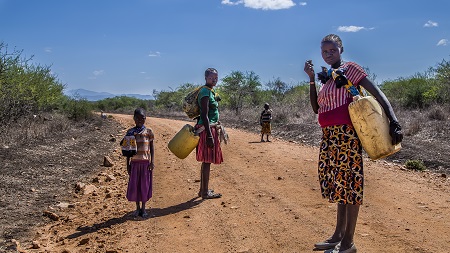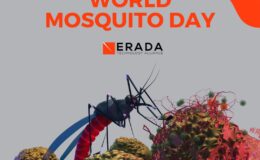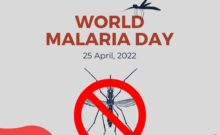August 20th marks the date of Sir Ronald Ross’ discovery of the link between female anopheles mosquitoes and the transmission of malaria to humans, all the way back in 1897. This has led the way to today’s research into the malaria parasite and how to protect communities from infected mosquitoes.
Over the course of the past two decades, research and consequential innovation has resulted in life-saving protection measures implemented in high-burden areas. Yet new threats are continually emerging. It is vital that the global community stays a step ahead of the Plasmodium parasite and continue to learn the ways of the mosquito so that vulnerable areas are not left behind.
For World Mosquito Day this year, we’re taking a look at how people can protect themselves against mosquito bites and what the future holds for malaria research in a changing global landscape.
Mosquito net 2.0
Nets are one of the simplest measures of malaria prevention. The problem is they do not prevent against all mosquitos, in particular the species which are more active during the day. Many nets are treated with an insecticide, which can reinforce the protection provided, but the deployment of this type of net needs to be scaled up, especially in more isolated regions.
A 2020 article published in the Lancet following a trial of long-lasting insecticide nets in Uganda revealed a decrease in mosquito prevalence in areas with the latest generation of treated mosquito nets of around 4% over the course of six months, highlighting the importance of these nets in preventing the transmission of malaria.
Frontline healthcare workers are critical in getting these nets to at risk communities, but they, too, must be protected by having medication and rapid diagnostic tests.
Following the mosquito’s timetable
Research has resulted in a clearer picture of a mosquito’s life being built and recorded. This, in turn, allows health workers and facilities to better prepare for a potential influx of cases. It also means that prevention measures can be strategically deployed well ahead of the traditional malaria season.
Another discovery made in recent years is identifying who mosquitoes are more likely to bite due to the various compounds found on the human skin. Though this research is still ongoing, it does pave the way forward to better understanding the mosquito’s behaviour pattern and how this information is used in protection programmes.
New research is continually being published, each paper bringing something different to the fight against malaria. Naturally, there will need to be further examination of these results, but the fact remains, science is a true ally in beating one of the world’s deadliest diseases. With its help, we will be able to focus efforts to prevent malaria where the greatest need is.
Swift diagnosis, swifter action
Speed is essential when it comes to treating mosquito bites. In areas where mosquitoes are particularly active, delays in getting medical attention can be fatal.
Rapid diagnostic tests, such as our Salva! test, are certainly making a difference in providing a quick and accurate means of identifying malaria. Now the challenge is deploying these in community facilities where the local population may not have access to a doctor’s surgery. By bringing accurate, non-invasive testing to the most vulnerable, malaria can be stopped at source.
While these actions do go a long way in keeping people safe from mosquitoes, the greatest protections will continue to be awareness and investment. Eradicating malaria simply cannot happen without them both.
The deployment of RDTs and nets as we’ve discussed here needs to be a high priority, as does the continued support for research from governments. While we have, undoubtedly, taken huge strides since Sir Ronald Ross’ discovery, protecting all generations from this deadly disease is a challenge far from being over.







